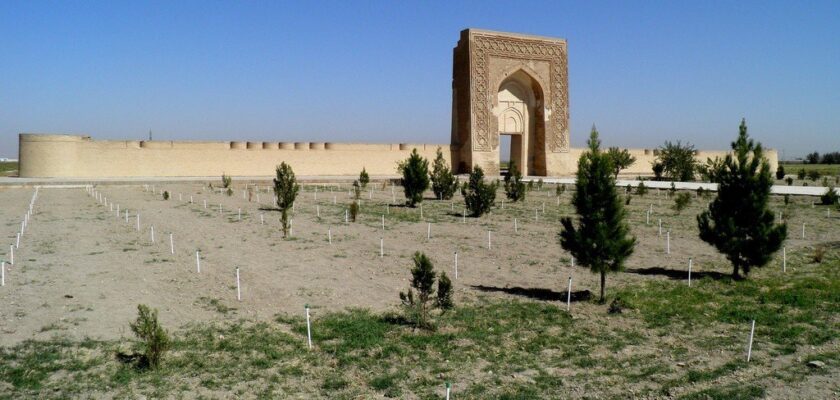Caravanserai Rabat-e Mâlik
Rabat-e Mâlik Caravanserai is the remains of a medieval inn and a monument-palace of the Karakhanid era, located in the Hungry Steppe, near the Uzbek city of Navoi. A section of the Great Silk Road that connected Samarkand and Bukhara once ran here. Many rich caravans traveled along the road and needed protection, so a guard house or “ribat” was built in the steppe. Later the fortifications were used as a shelter for travelers and a summer palace.
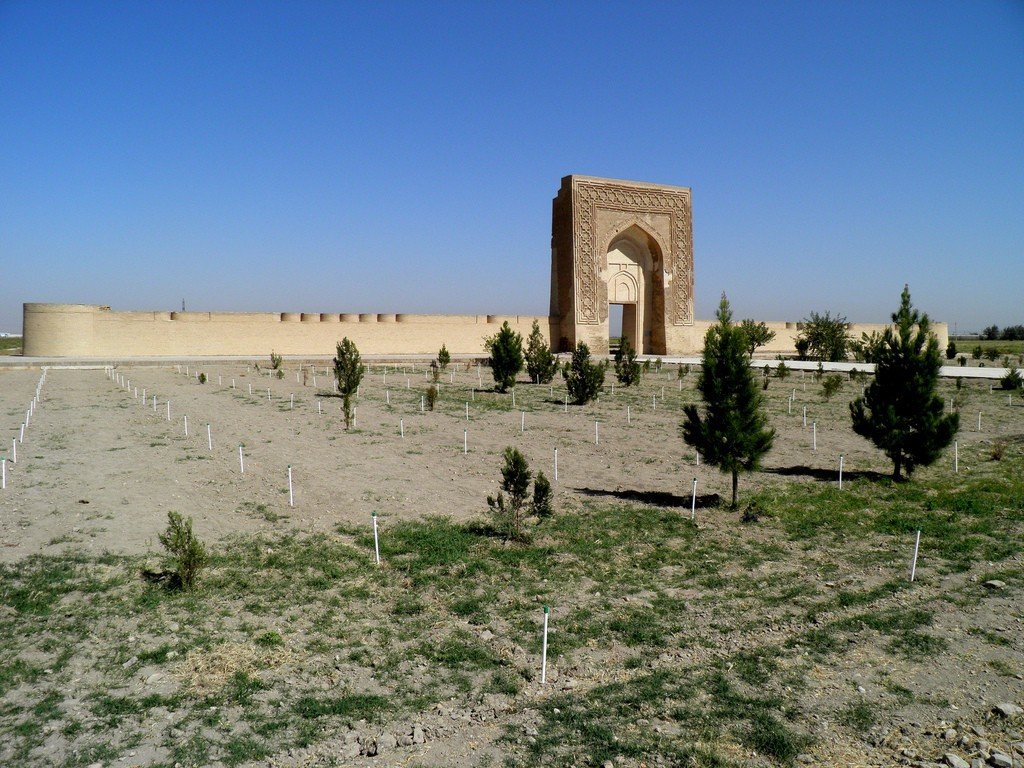
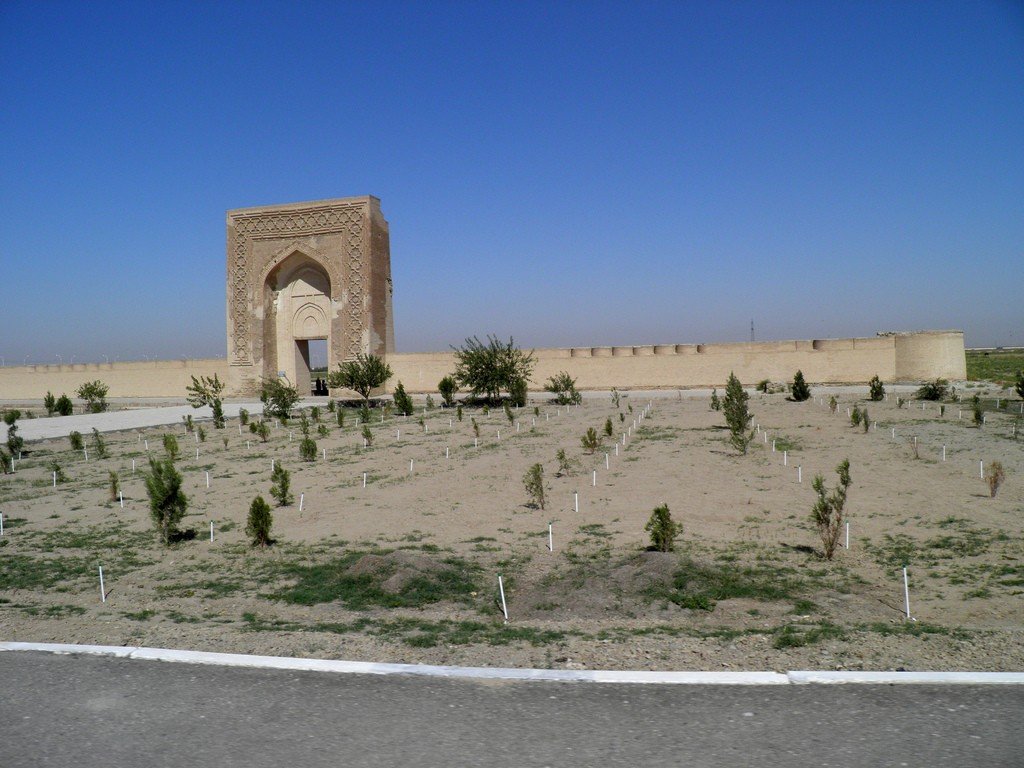
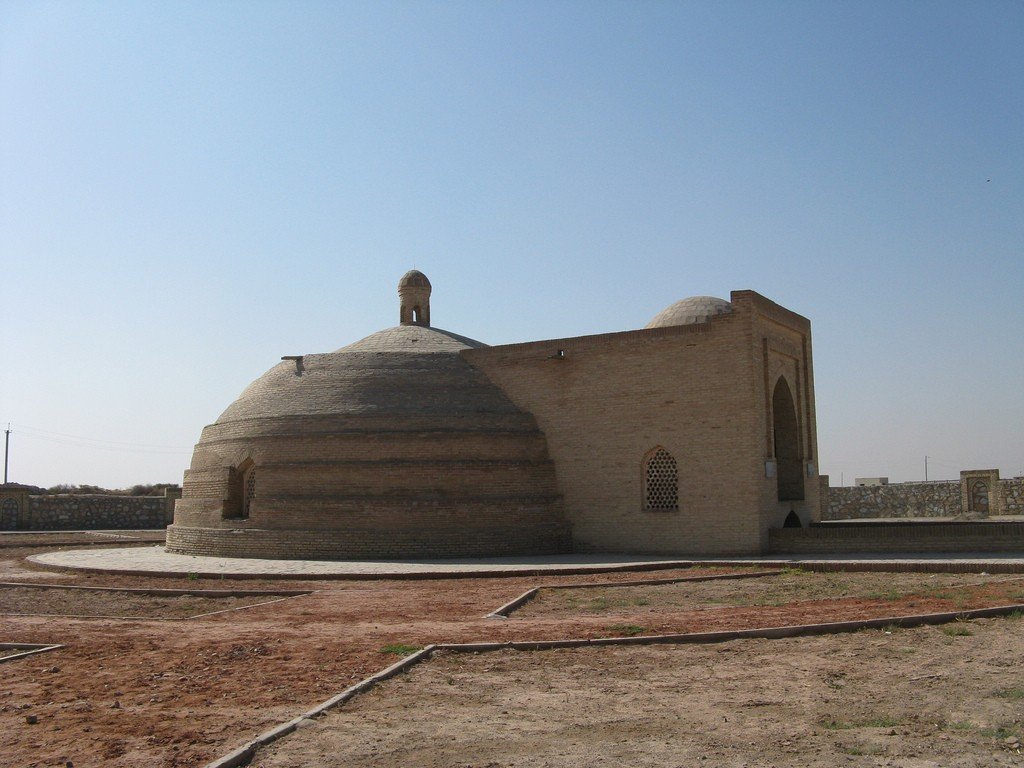
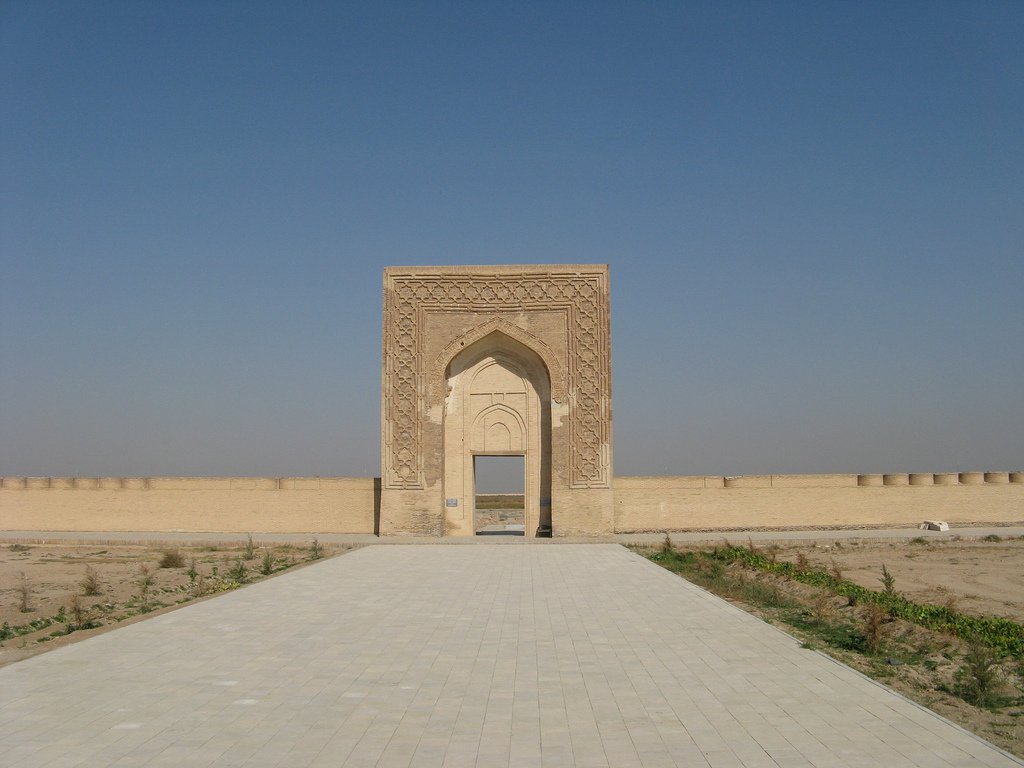
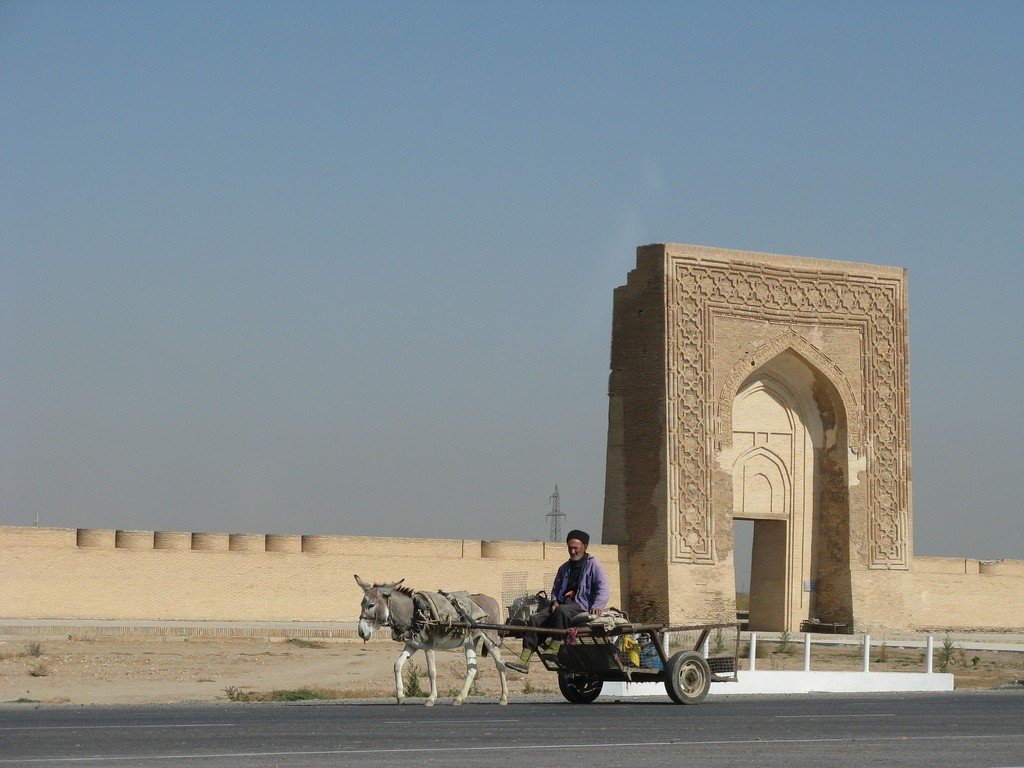
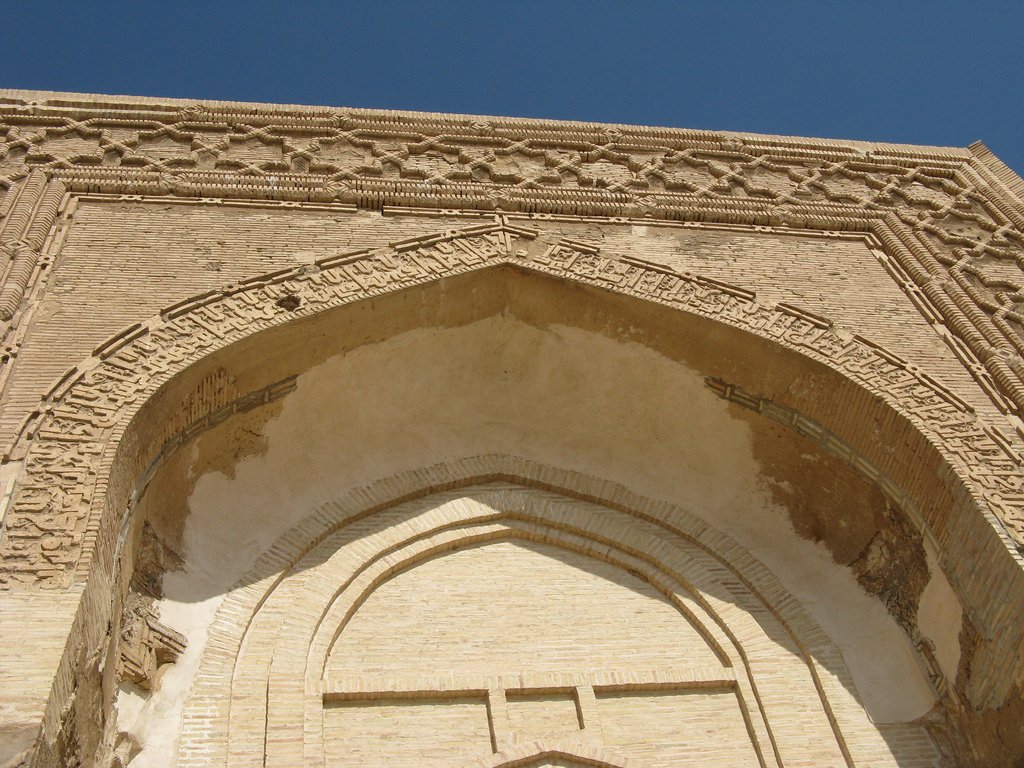
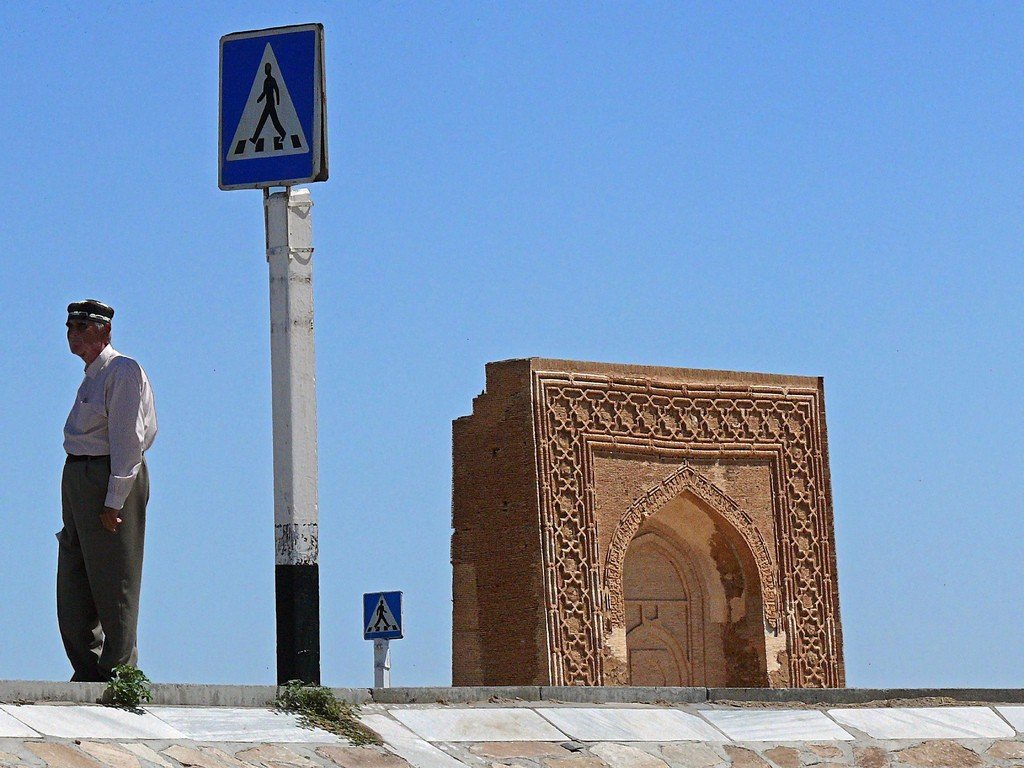
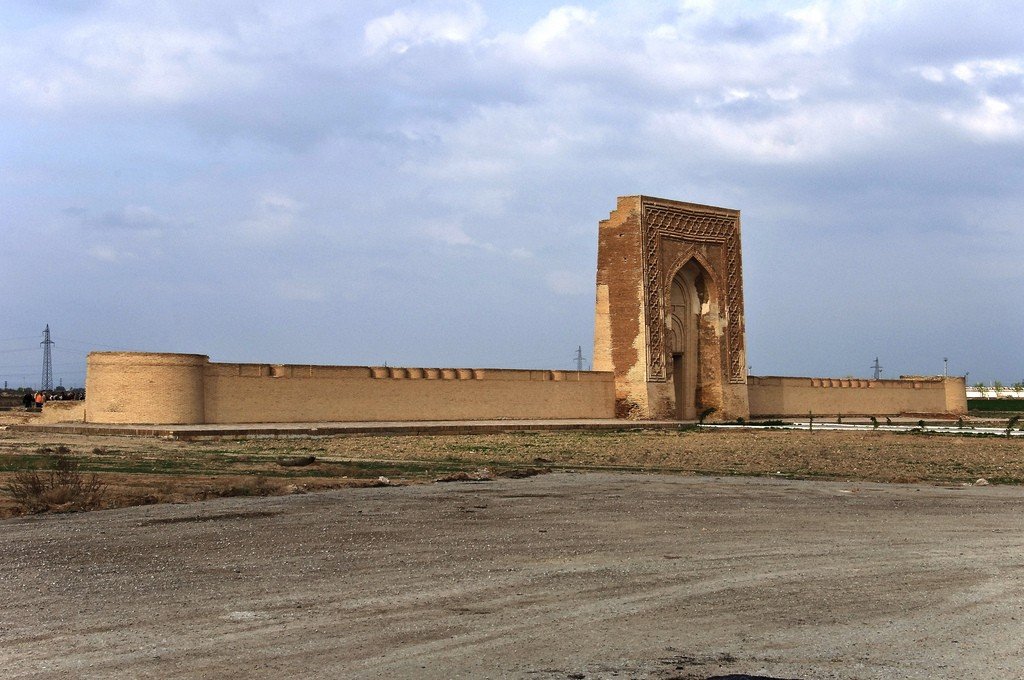
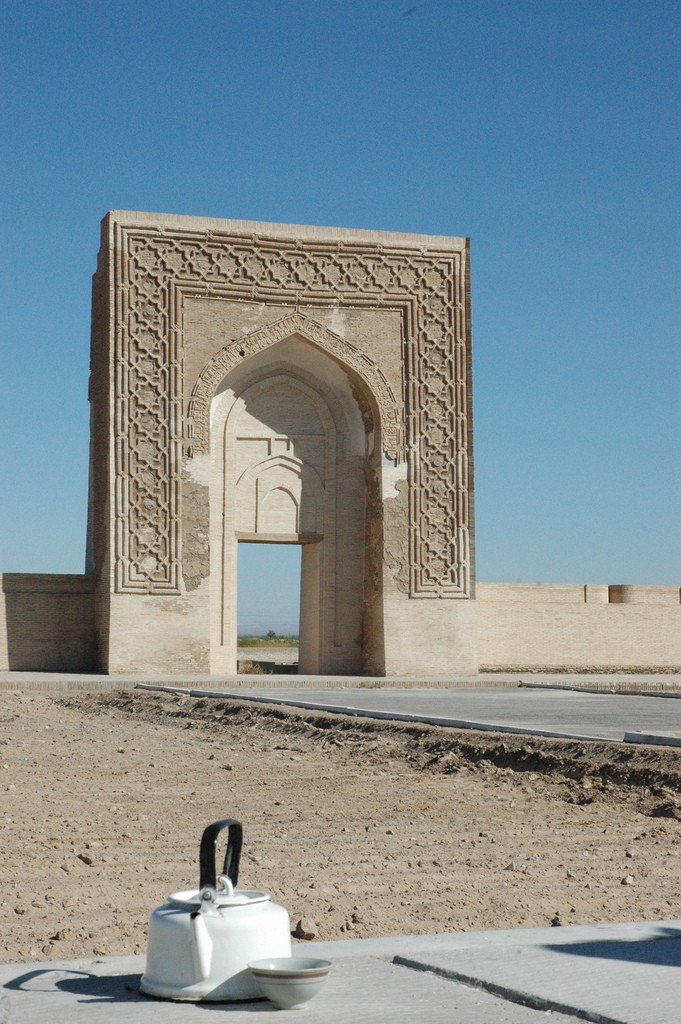
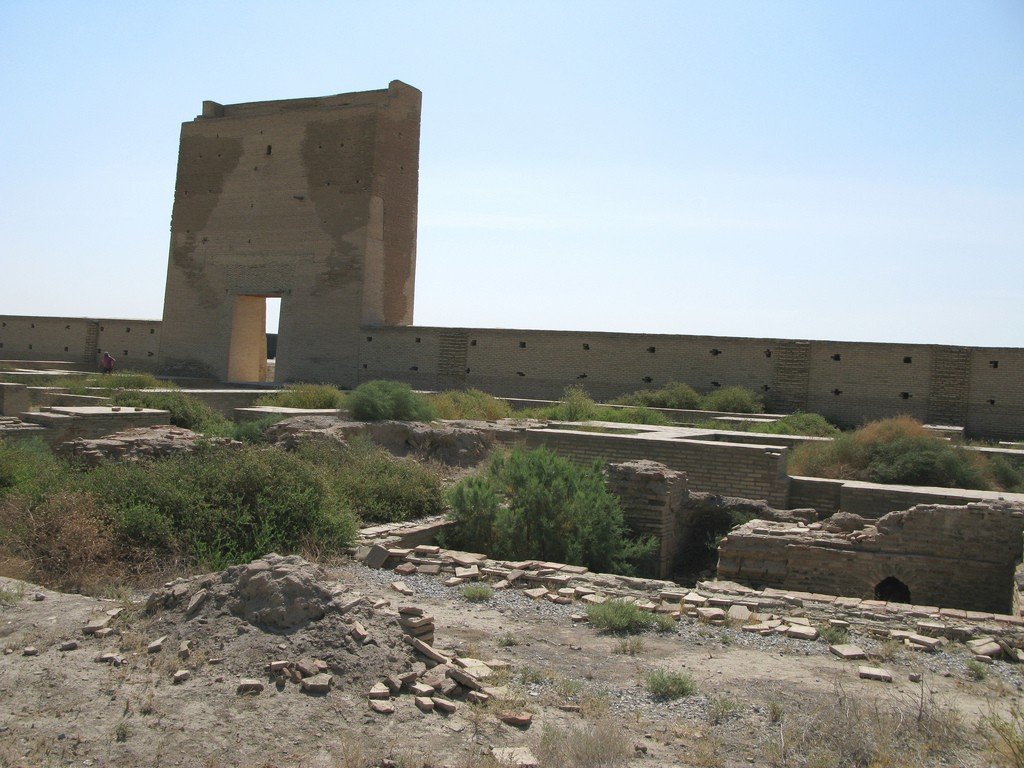
Video: Rabat-Malik Caravanserai
Highlights
The first information about the forgotten architectural monument appeared in the mid-19th century. In 1841-1842, the English naturalist Alexander Lehmann, who participated in the Bukhara mission, sketched the remains of old buildings and made descriptions of their decoration. At first, historians believed that Rabat-Malik was an ordinary inn, but in the course of archaeological excavations of the monument it became clear that the Karakhanid rulers used it for their summer residence.
.Researchers found near the foundations of the buildings and the entrance portal several residential and religious rooms decorated with carved non-poured terracotta and carved ganch. In addition, among the ruins they managed to dig up a lot of ancient pottery – jugs, decanters with a narrow neck, teapots and flasks. The fact that the caravanserai Rabat-Malik served as a fortification, was evidenced by two powerful fortress walls located at a distance of 100 meters from the architectural monument. It is noteworthy that the thickness of these walls reached 1.7-1.8 meters.
.
The heyday of Rabat-Malik caravanserai was in the XII century. After the Karakhanid state collapsed, Timur and representatives of the Sheibanid dynasty stopped here.
.
Caravanserai nowadays
The ruins of the monument-palace are recognized as one of the largest structures of civil architecture of pre-Mongol Central Asia, and today they are open to travelers. Experienced restorers have fully restored the majestic entrance portal, as well as part of the ancient walls.
.
The entrance to the Rabat-Malik caravanserai was the preserved South Portal. Behind the portal are the ruins of the inn with dimensions of 100 by 100 meters. It is known that at its corners once stood fortress towers 15 meters high. In the beginning travelers passed through the gallery, which separated the household premises from the inn – kitchens with tandoori, rooms for livestock, warehouses for fodder and housing for servants.
.
The gallery led to the octagonal rotunda, representing the Central Hall, and from there travelers got to the living rooms located in the northern part of the inn. The middle part of the architectural monument was occupied by a small mosque.
Sardoba Malik
Not far from the ruins of the inn, behind the old road, you can see the ancient stone cistern Sardoba Malik. The giant underground tank, 13 meters deep, was designed to store a large supply of water. It was erected in the XI century to supply water to all who stayed in the caravanserai Rabat-Malik.
.The Zeravshan River and the inn were connected by an underground canal or qanat. Water was stored in a stone container throughout the hot summer, so travelers passing by could always quench their thirst and water their tired camels. The water remained clean and fresh thanks to the 12-meter-high domed roof, which protected it from the sun and dust.
.The brick portal to the dome of Sardoba Malik was added in the 20th century. A ramp leads from it to the water, and three rectangular light windows can be seen on the dome itself.
.
How to get there
Rabat-Malik Caravanserai is 23 km from the center of Navoi and 100 km from Bukhara. Near the historical and architectural monument passes highway M37, connecting Samarkand, Bukhara, Turkmenabad and Ashgabat. From the international airport in Navoi to the caravanserai can be reached by cab.
.